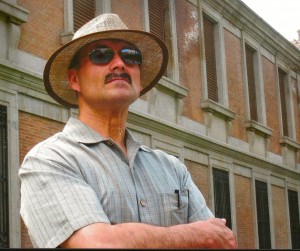by Thomas Hoffman, PE
It was suggested that I write something about the similarities between music and engineering/architecture. At first I was going to write about rhythm, intervals, phrasing and mathematical similarities. However, that has all been done before. That led me to the old question: How do you get to Carnegie Hall? Practice, practice, practice. Getting to Carnegie Hall represents the pinnacle of a career in the music profession. Same with architects and engineers – how do you get to the pinnacle of your profession? Practice, practice, practice. Do you get it right the first time? No. Do you get it right the 100th time? Perhaps not. But after you do get it right, do you stop practicing? No. That’s when you REALLY have to practice. So here is my completely different list of similarities between music and engineering/architecture:
Performance. Image is everything. When you meet a client, you don’t go in cold. You must warm up and have practiced what you are going to do and say. Everything you present has to be first class — it has to look as good as it sounds, just like a live musical performance. As with any live performance, it doesn’t always go as planned. Being proficient with your skills allows you to improvise through those unexpected times until it all gets back on track.
Practice. Don’t just practice until you get it right — practice DOING it right. Don’t stop after you do something correctly the first time. You don’t just go on stage and play; you have to practice. It’s the same with a presentation to a client to get that big job or when designing a building. You have to practice. You may spend weeks or months practicing and fine tuning a 30-minute presentation. When you finally give that perfect presentation to the client, that feeling is almost reward enough.
Focus, Concentration and Planning. Even as things are happening around you, you need to maintain your concentration and stay focused on the task at hand. This does not mean you should do only one thing at a time; just don’t get distracted. Keep everything moving — don’t stop playing because you dropped a drumstick. Have another one ready, pick it up and keep on going; plan for it. People are depending on you. If you stop, it will have a chain reaction and everything else will come to a stop.
Harmony. Work together, in harmony, like an orchestra or band. The architect is usually the leader of the design process — the front man, everyone else plays a supporting role, but make sure you don’t play through their solos. Sometimes it is not how well you play, but how well you play with others. Working well with other is the key to the longevity of your career.
Stay away from long, complex, incomprehensible or overly intricate words or phrases. You can get an amazing solo from just one note; it just depends on how you play it.
And in closing, another old saying: “If it were easy, everyone would be doing it”. It is not easy!
Tom Hoffman, PE is a professor of architecture at SCAD [www.scad.edu] and a rockin’ drummer.



 By Emad M. Afifi, D. Arch.
By Emad M. Afifi, D. Arch.